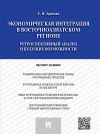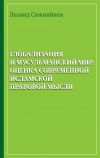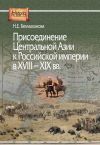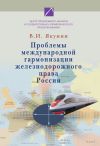
Автор книги: Коллектив авторов
Жанр: Прочая образовательная литература, Наука и Образование
Возрастные ограничения: +16
сообщить о неприемлемом содержимом
Текущая страница: 3 (всего у книги 33 страниц) [доступный отрывок для чтения: 8 страниц]
Инициатива «Один пояс, один путь» поможет продвинуть китайско-германские двусторонние торгово-экономические инвестиции. Это принесет пользу не только китайским компаниям, европейские товары, услуги и финансовый сектор также смогут освоить новые рынки. Например, контейнерный грузовой рейс-экспресс «Китай–Европа» стал локомотивом «Шелкового пути» для продвижения китайско-германских двусторонних экономических и торговых инвестиций главным образом потому, что железнодорожные перевозки имеют очевидные преимущества по сравнению с морскими перевозками, экономя половину времени, а транспортные расходы ниже по сравнению с воздушными перевозками. В марте 2014 года председатель КНР Си Цзиньпин и занимавший в то время пост вице-канцлера Германии Зигмар Габриэль приняли участие в церемонии открытия прямого железнодорожного сообщения Чунцин–Дуйсбург («Чунцин–Синьцзян–Европа»). Это, по-видимому, было первым шагом по китайско-германскому сотрудничеству в рамках инициативы «Один пояс, один путь». В настоящее время между Китаем и Германией проложен целый ряд международных железнодорожных перевозок грузов, таких как Чунцин–Дуйсбург, Чжэнчжоу– Гамбург, Шэньян–Лейпциг, Пекин–Нюрнберг. 14 апреля 2016 года отправился рейс-экспресс «Китай–Европа» с железнодорожной станции Шилун, провинции Гуандун в Дуйсбург. От других рейсов он отличается тем, что отправляется еженедельно по четвергам и обеспечивает нормальную работу1919
《广东常态化开行中欧班列》. [Электронный ресурс]. Режим доступа: URL: http:// www.gov.cn/xinwen/2016-04/14/content_5064091.htm (дата обращения: 10.08.2019).
[Закрыть]. China Railways (Китайская железнодорожная корпорация) и Deutsche Bahn AG (немецкий железнодорожный оператор) также подписали соглашение о стратегическом сотрудничестве в области эксплуатации рейса Китай–Европа и высокоскоростных железнодорожных перевозок. В 2015 году между Китаем и Германией было перевезено порядка 30 000 контейнеров. Ожидается, что к 2020 году это число увеличится в три раза и составит около 100 000 контейнеров в год2020
《德铁愿积极对接 “一带一路” 建设》 [Электронный ресурс]. Режим доступа: URL: http://paper.ce.cn/jjrb/html/2016-03/21/content_296060.htm (дата обращения: 15.09.2019).
[Закрыть].
С упрощением перевозок в Центральной Европе связано сотрудничество в области упрощения таможенного оформления и сотрудничество в области высокоскоростных железнодорожных перевозок. В документе «Платформа китайско-немецкого сотрудничества: совместное формирование инноваций», китайская и германская стороны заявили, что «страны взяли на себя инициативу и обязательство создать эффективную цепочку поставок в области железнодорожного транспорта для обеспечения беспрепятственной перевозки грузов». В коммюнике по итогам четвертого раунда китайско-германских межправительственных консультаций стало ясно, что китайская компания-производитель вагонного оборудования CRRC Corporation Limited и немецкая компания по производству электротоваров Siemens сотрудничают в области высокоскоростных железных дорог и совместно осваивают сторонние рынки. Фактически в дополнение к базовым объектам инфраструктуры (включая информационно-коммуникационную инфраструктуру) на сторонних рынках могут быть реализованы и проекты, включающие энергетику, транспорт, защиту окружающей среды, сельское хозяйство и здравоохранение. В рамках сотрудничества Китай и Германия могут дополнять друг друга в области капиталовложения, технологий, рынка и управленческого опыта. А также могут совместно решать вопросы управления безопасностью и стремиться к более широкой международной поддержке и сотрудничеству.
В итоге реализация инициативы «Один пояс, один путь» помогает укреплять сотрудничество между Китаем и Германией в финансовом секторе и будет способствовать превращению юаня в международную валюту. Китай поддерживает строительство и развитие офшорного рынка китайских юаней и местного банка клиринговых услуг для юаня во Франкфурте-на-Майне, а также поддерживает немецкие финансовые учреждения в использовании квоты квалифицированных иностранных институциональных инвесторов (КИИИ) для выхода на китайский рынок. Германия поддерживает юань в присоединении к специальным валютным корзинам Международного валютного фонда, а также поддерживает методы реформирования квот МВФ. В настоящее время благодаря совместным усилиям с немецкой стороной с 1 октября 2016 года Международный валютный фонд уже включил юани в корзину СДР (специальные права заимствования). Кроме того, как уже упоминалось выше, Германия является важным инвестором в Азиатском банке инфраструктурных инвестиций. В то же время при поддержке Германии Китай стал полноправным членом Европейского банка реконструкции и развития. У Китая и Германии широкие перспективы сотрудничества в области инвестиций и финансирования.
Список литературыNicola Casarini. When all roads lead to Beijing: Assessing China’s New Silk Road and its implications for Europe // The International Spectator. Italian Journal of International Affairs. 2016, 51 (4). P. 1–14.
Цуй Хунвэй. «Идай Илу» чанъи юй Жункэ тоуцзыцзихуа дуйцзе цяньцзин фэньси [崔宏伟:《“一带一路”倡议与容克投资计划对接前景分析》, 载 《德国研究》,2016年第1期,第51–61页。] Анализ перспектив интеграции инициативы «Один пояс, один путь» и инвестиционного плана Юнкера. Немецкие исследования, No 1, 2016. С. 51–61.
Чжэн Чуньжун. «Дэгоцзайчжцноугуаньсичжундэцзюэсэ»[郑春荣:《德国 在中欧关系中的角色》,载《欧洲研究》, 2015年第3期,第1–14 页。]Роль Германии в китайско-европейских отношениях. Европейские исследования, Выпуск 3, 2015. С. 1–14.
Кэлинь Фулиньтэ, Чжан Сяотун. «Идай Илу» юй диюань чжэнчжи ли-лунь чуансинь [科林•弗林特、张晓通:《“一带一路”与地缘政治理论 创 新》,载《外交评论》,2016年第3期,第1–24页。] Инициатива «Один пояс, один путь» и инновационные геополитические теории. Дипломатический обзор. Выпуск 3, 2016. С. 1–24.
ReferencesNicola Casarini. When all roads lead to Beijing: Assessing China’s New Silk Road and its implications for Europe // The International Spectator. Italian Journal of International Affairs. 2016, 51 (4). P. 1–14. (in English)
Cui Hongwei. ““Yidai yilu” zhanlüe yu rong ke touzi jihua duijie qianjing fenxi” [崔宏伟:《 “一带一路” 倡议与容克投资计划对接前景分析》,载 《 德国研究》,2016年第1期,第 51–61 页。] Analysis of the prospects for the integration of the “One Belt, One Road” initiative and Juncker’s investment plan. German Studies, 2016, No. 1. P. 51–61. (In Chin.)
Zheng Chunrong. “Deguo zai zhong’ou guanxi zhong de juese”[郑春荣: 《德国在中欧关系中的角色》,载《欧洲研究, 2015年第3期,第1-14页。] The role of Germany in Sino-European relations. European Studies, 2015, No. 3, P. 1–14. (In Chin.)
Kelin Fulinte, Zhang Xiaotong. ““Yidai yilu” yu diyuan zhengzhi lilun chuangxin” [科林•弗林特、张晓通:《 “一带一路” 与地缘政治理论创新, 载《外交评论,2016年第3期,第1-24页。] The “One Belt, One Road” initiative and innovative geopolitical theories. Diplomatic Review, 2016, No. 3. P. 1–24. (In Chin.)
Китайская инициатива «Один пояс, один путь» и ее влияние на Ближний Восток
НОМИТА ТОППО
Научный cотрудник, Центр изучения России и Центральной Азии, Школа международных исследований, Университет имени Джавахарлала Неру Нью-Дели, Индия
nomitavandana87@gmail.com
В последние годы Китай значительно расширил свое экономическое присутствие на Ближнем Востоке. Китайская инициатива «Один пояс, один путь» (OBOR) направлена на экономическое объединение более 60 стран Ближнего Востока, Африки, Европы, Южной Америки и южных регионов Азии. Китайская инициатива OBOR или BRI (Belt and Road Initiative) намерена возродить древний Шелковый путь наряду с морским Шелковым путем. Ближний Восток играет жизненно важную роль в реализации ОПК, поскольку он является источником энергии, обеспечивая более половины импорта сырой нефти Китаем. Кроме того, это также ключевой пункт для доступа на рынки Европы и Африки, где ЕС является крупнейшим экспортным рынком Китая. Китай инвестировал значительные средства в такие секторы, как развитие портов, нефтепереработка, а также развитие инфраструктуры в ближневосточном регионе. Китай также ускорил переговоры о создании зоны свободной торговли между Китаем и Советом сотрудничества стран Персидского залива (ССАГПЗ). Эта статья представляет собой попытку исследовать природу растущего присутствия Китая на Ближнем Востоке и его последствия в регионе. Для Китая Ближний Восток является торговым центром, поскольку около 70% торгового импорта в Китай поступает с Ближнего Востока. Китай также поощряет программы культурного обмена и межличностное взаимодействие. Таким образом, в настоящем исследовании предпринимается попытка проанализировать присутствие Китая на Ближнем Востоке и его усилия по региональной интеграции, поскольку инициатива «Один пояс, один путь» активизировала развитие в таких регионах, как Ближний Восток и Африка, и пытается связать мир в одну нить.
Ключевые слова: Китай, Ближний Восток, «Один пояс, один путь», инфраструктурное развитие, региональная интеграция.
CHINA’S ONE BELT ONE ROAD INITIATIVE AND ITS IMPACT ON MIDDLE EAST
NOMITA TOPPO
Research Scholar, Centre for Russian and Central Asian Studies, School for International Studies, Jawaharlal Nehru University, New Delhi, India
nomitavandana87@gmail.com
In recent years China has significantly expanded its economic footprint in the Middle East. China’s One Belt, One Road (OBOR) initiative, aims to economically connect more than 60 countries throughout Middle East, Africa, Europe, South America and southern regions of Asia. The OBOR or BRI (Belt and Road Initiative) by China intends to revive the ancient Silk Road along with a Maritime Silk Road. The Middle East plays a vital role in the implementation of OBOR as it is a source of energy, providing more than half of China’s crude oil imports. Besides, it is also a pivotal point for market access in Europe and Africa, where the EU is China’s largest export market. China has invested heavily in the sectors including port development, oil and refinery development, and infrastructure development in the Middle East region. China has also accelerated negotiations for the establishment of a free trade area between China and the Gulf Cooperation Council (GCC). This article is an attempt to explore the nature of China’s growing presence in the Middle East, and its implications in the region. For China, Middle East is a trading hub as around 70 per cent of the trade import in China comes from Middle East. China is also promoting cultural exchange programmes and people-to-people interactions. Thus, this paper attempts to analyse China’s presence in the Middle East and its efforts towards regional integration, as the One Belt One Road initiative has initiated development in the regions like Middle East and Africa and is trying to bind the world in one thread.
Keywords: China, Middle East, One Belt One Road, infrastructure development, regional integration.
IntroductionOne Belt One Road initiative comprises of two notions introduced by the President of China Xi Jinping in 2013 to endorse economic engagement and investment along two major routes. The first route, the New Silk Road Economic Belt, is reported to run westward overland through Central Asia to Europe. The second route, the 21st Century Maritime Silk Road, is expected to make a loop around south and westward by sea towards Europe, with proposed stopovers in South-east Asia, South Asia and Africa.
In recent years, Chinese companies are leaving their home-based market and going to foreign markets and establish itself. President Xi is putting efforts to strengthen China’s global position. He has declared several high-profile multilateral initiatives envisioned to advance China’s international existence and promote closer ties with other countries. One belt, one road “not only represents a renewed, stronger and better coordinated push to expand China’s influence overseas, but it is also coupled with a domestic investment drive, in which nearly every Chinese province has a stake2121
China-led BRI and its Impact on India with Specific Reference to CPEC. URL: https://www.nepjol.info/index.php/joia/article/view/22592 (date of access: 28.11.2019).
[Закрыть].”
The broad mandate of this research is to examine and analyze the presence of China through the OBOR initiative in the Middle East. Examining the implications of OBOR in the Middle east and its effort in regional integration constitutes one of the prime tasks of this research. The proposed study is based on qualitative analysis. The data is obtained majorly from primary and secondary sources. Primary source include official record, government documents, data reports, official policy statements and also speeches and interviews on popular media. Documents of international and regional organisations like MENA and SCO will be used in this study. These will establish imperial basis of this research. The study will also make use of secondary sources such as books, newspapers, journals, articles published in academic journals and internet sources. These will extensively be used for the analysis of all the available primary and secondary sources will apply throughout the study.
China’s Obor InitiativeOBOR is a vision launched by President Xi that seeks to integrate China with the Eurasian landmass through an immense network of transport corridors, energy pipelines and telecom infrastructures. The geographic span of OBOR is fairly large, covering around 65 countries, 4.4 billion people and 30 per cent of global GDP2222
China Belt and Road Initiative Measuring the impact of improving transportation connectivity on trade in the region. URL: https://www.rand.org/content/dam/rand/pubs/ research_reports/RR2600/RR2625/RAND_RR2625.pdf (date of access: 02.12.2019).
[Закрыть]. Although the initiative is called One Belt, One Road, which has created an impression that it is just one corridor, rather the two main routes actually have a series of sub-branches and various economic corridors like for instance, the China-Pakistan Economic Corridor (CPEC), or the China-Central Asia-West Asia Economic Corridor (CCWAEC). Therefore in 2015 China tried to change the name to Belt and Road Initiatives (BRI). However, still it is popularly known as OBOR.
OBOR is China’s long-term development strategy. However, in the short term, it is a means to offset higher domestic production cost and excess capacity, reduce transport cost, create new markets for Chinese goods and services, and internationalize the Chinese currency RMB. Whereas, in the long term, China requires to ensure it has timely, efficient, and secure access to markets and resources as in the present it is the worlds’ largest trading nation. Chinas presence in the Middle East is of great importance as it links the three continents of Asia, Africa and Europe.
Main ResultsThe main finding of the study is summed by under the following subheadings: OBOR and Impact on the Middle East; what do countries get in return?
As President Xi Jinping has increased China’s effort to take a more active role internationally, the Middle East has become one of the major regions for staging the OBOR initiative. In July 2018 in a gathering of 21 Arab nations in Beijing, President Xi assured substantial loans and financial aid to support economic development in the region. During the meet the Chinese government also lucratively elevated their relationship to a “strategic partnership2323
How China Is Winning Over the Middle East. URL: https://thediplomat.com/2018/07/how-china-is-winning-over-the-middle-east/ (date of access: 02.12.2019).
[Закрыть].”
Effectively, China has planned to launch a mini Marshall Plan for the Middle East and North African region. The main objective of the China-Arab State Cooperation Forum (formed in 2004) is the economic development of the region. China sees economic development as a key to resolve various security and humanitarian problems in the region.
China and the Middle East have mutual interests and their economic relationship is now expanding beyond oil. Chinese companies are pursuing major infrastructure projects in the Middle East region as part of Belt and Road initiative. The Chinese organizations created to support the Belt and Road Initiative is readily providing financing for much-needed infrastructure. Like for instance in Egypt, the Chinese have declared to invest around $50 billion to help the development of the new administrative capital.
The demand of renewable energy, fintech, artificial intelligence, and electric cars are increasing in the Middle East; sectors where China is playing a leading role. Major portion of China’s financing will go toward supporting projects and sectors where China is a global leader, which is being welcomed by the Middle Eastern countries.
Apart from loans and financial aid for economic development, it was also announced at the Arab Summit for the creation of financial consortium. Wherein Arab and Chinese banks will establish a fund of around $3 billion to support “economic reconstruction” and “industrial revival.” The main objective of this group will be to promote cooperation in the fields of oil and gas, nuclear, and clean energy.
Considerably, President Xi has called upon the Arab countries to commence with negotiations for a free trade agreement between China and the Arab countries. Such negotiation is part of President Xi’s larger strategy of exerting its economic influence to negotiate “free trade” agreements with major regions around the globe.
What do countries get in return?In lieu of cooperating in OBOR projects countries receive preferential financing including grants, interest-free and concessional loans, and other forms of government funding. They also receive a full development package to strengthen their economy. For instance, UAE, which is China’s second largest trading partner in the region that handles 60 per cent of China’s reexports to Europe and Africa with an estimated value of $70 billion each year. China has signed a $300 million deal to develop a manufacturing operation in the free trade zone of Khalifa Port, on the heels of China’s COSCO shipping winning rights ($738 million) to develop and operate a new container terminal for 35 years. While most shipping companies own/ operate terminals and ports on foreign terrain as shipping-centric operations, China differs in that they open new ports and invest in adjoining free trade/ special economic zone and other development initiatives as well so that host countries get the entire development package2424
Next Up on China’s Maritime Silk Road: Abu Dhabi. URL: https://www.forbes.com/sites/wadeshepard/2017/08/02/next-up-abu-dhabi-chinas-maritime-silk-road-breaks-into-the-middle-east/#6022124b9bbe (date of access: 5.12.2019).
[Закрыть].
China is an old ally of Iran and has vested interests, along with Russia, in Iran’s oil and gas industry. China is financing the upgrading of the Tehran-Mashhad railway along with China’s Exim Bank lending US$1.5 billion for the lines electrification. The track of 2,300 km line will eventually link Urumqi, the capital of China’s western Xinjiang Province, to the Iranian capital Tehran, connecting Kazakhstan, Kyrgyzstan, Uzbekistan and Turkmenistan along the way2525
China’s Belt & Road Initiative In The Middle East. URL: https://www.silkroadbriefing.com/news/2019/06/21/chinas-belt-road-initiative-middle-east/ (date of access: 5.12.2019).
[Закрыть].
The proposed railway project is supposed to run from Tehran and join Iran’s east-west network leading west to Turkey and Eastern Europe. It is also expected to open a way to Europe by a developing rail route from the southern Iranian ports to Azerbaijan and Europe. Further linking with the Iran’s North-South Transport Corridor, this runs from Chabahar Port north to Azerbaijan. Towards the east, this links up with the also Chinese funded, low key Lapis Lazuli Corridor.
The rail project will extend from Tehran into Turkey and across the borders with the European Union. Additionally, Turkey is also being linked with rail freight lines running north through China and across Kazakhstan, to Baku in Azerbaijan. The Baku-Tbilisi-Kars Railway provides a direct link to Europe from China, via Turkey as it connects through a cross-Turkey. A high-speed rail service is being constructed by China, connecting Kars with Edirne, near Turkey’s border with Bulgaria and Greece. Bilateral trade between Turkey and China was recorded at US$26.3 billion in 2017. Turkey’s export to China was around US$3 billion while its imports from China exceeded US$23 billion.
China has extensively invested in Syria for developmental purpose. According to Ellis, this is «an opportunistic and geopolitical play; opportunistic as Chinese contractors are looking at reconstruction projects to rebuild the country after its devastating civil war, and geo-political as China recognizes that Syria can provide an alternative route to Europe than the Suez Canal»2626
China’s Belt & Road Initiative In The Middle East. URL: https://www.silkroadbriefing.com/news/2019/06/21/chinas-belt-road-initiative-middle-east/ (date of access: 5.12.2019).
[Закрыть]. This region is being developed by the Chinese with a Special Economic Zone which is being built in Tripoli Port, and plans to rebuild the Tripoli-Homs Railway. The zone provides Chinese and other regional businesses with low tax options for consolidating and adding value to component parts sourced elsewhere to then be exported to Syria. As per the estimate of the United Nations, it will coast around US$250 billion to rebuild the region. As Syria is oil rich region, China can initiate with the infrastructure building and in return secure energy supplies. Meanwhile, develop a secondary route to the Mediterranean and southern Europe.
China is a big investor in Israel and has plenty of opportunity in the market, in the fields including real estate, transportation, energy, telecommunications, and other infrastructure requirements. Its ports and trade routes to the Middle East make it a major gateway to Europe for the Middle East, which is beneficial for China. Projects in Saudi Arabia, and the other Arabian states include gas pipelines, to meet Chinese demand and also a better consistent energy network across the region.
In 2018 President Xi visited Saudi Arabia, Egypt, and Iran2727
Chinese president back home after visits to Saudi Arabia, Egypt, Iran. URL: http:// en.people.cn/n3/2016/0124/c90883-9008539.html (date of access: 10.12.2019).
[Закрыть], and released its first Arab Policy Paper to signal its intention of increased engagement in the Mideast. The paper outlined the “1+2+3” cooperation framework2828
China in the Post-Hegemonic Middle East: A Wary Dragon? URL: https://www.e-ir.info/2018/11/22/china-in-the-post-hegemonic-middle-east-a-wary-dragon/ (date of access: 9.12.2019).
[Закрыть]. China is also trying to balance ties with Riyadh and Tehran, in March Beijing signed $65 billion worth of deals with Riyadh and aims to coordinate OBOR projects with Saudi Vision 2030, while in June China backed Iran’s admission to the China-led Shanghai Cooperation Organization (SCO) and recently extended a $10 billion credit line for infrastructure projects. Iran is an important node of the OBOR by virtue of its geography linking Central Asia with South and West Asia, while Saudi Arabia is a leader of the Gulf Cooperation Council (GCC) and also a key oil supplier2929
The Belt and Road and China’s Long-term Visions in the Middle East. URL: http:// www.ispsw.com/wp-content/uploads/2017/10/512_Lin.pdf (date of access: 10.12.2019).
[Закрыть]. With a planned Tripoli Special Economic Zone adjacent to the port, Tripoli could be a useful hub for Syria and enable China via the OBOR to play a constructive role in post-conflict reconstruction and stabilization efforts.









































